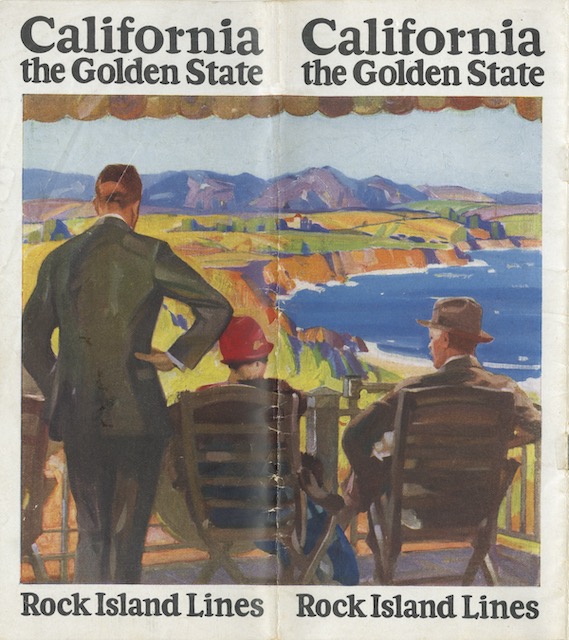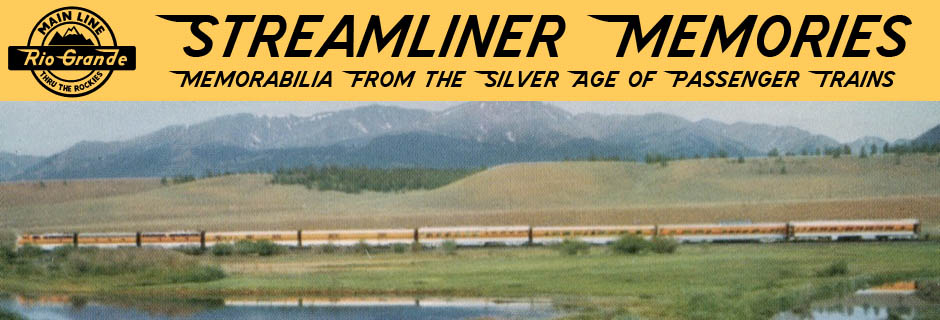We’ve seen this Maurice Logan painting on the cover of a 1928 Southern Pacific booklet. Today’s booklet has the same cover illustration, but the interior content is very different. For one thing, this one is 32 pages long vs. 16 for the SP booklet. The text and all, or nearly all, of the photos are also different.
 Click image to download a 14.0-MB PDF of this 32-page booklet.
Click image to download a 14.0-MB PDF of this 32-page booklet.
The above cover, as was typical of both Rock Island and Southern Pacific booklets of that era, is the back cover. The front cover of the SP booklet was a Maurice Logan painting of redwoods. The front cover of today’s booklet is the same painting of Carriso Gorge that was in a Rock Island booklet presented here about a week ago. In that booklet, the painting was too dark to read the signature of the artist, but today’s clearly reads “W.H. Bull.”
That refers to William Howard Bull, who we’ve encountered before. In 1898, Bull became the first commercial artist hired by the Southern Pacific, and he did numerous posters and illustrations for various booklets and brochures.
Although the subtitle of this booklet is “the Golden State,” that refers to the state of California, not the train. The booklet contains many references to the train, mostly in page headers saying things like, “Golden State Route — the comfortable low-altitude way.” But there are also references to the Apache, Californian, and Memphis-Californian, three other trains that took the Rock Island-Southern Pacific route to California.
Two of the page headers also note that Rock Island offered through Pullmans to California from both St. Louis and Minneapolis-St. Paul. The former would have been on Wabash or Missouri Pacific trains to Kansas City while the latter would have been on a Rock Island train, also to Kansas City.
In 1926, at least, Rock Island named its trains between the Twin Cities and Kansas City the Short Line Express and Short Line Special. These names refer to the Rock Island’s construction of a line from Allerton to Carlisle, Iowa, thereby creating a “short line” from St. Paul to Kansas City that was more than 100 miles shorter than the previous route (which also required a change of trains).
